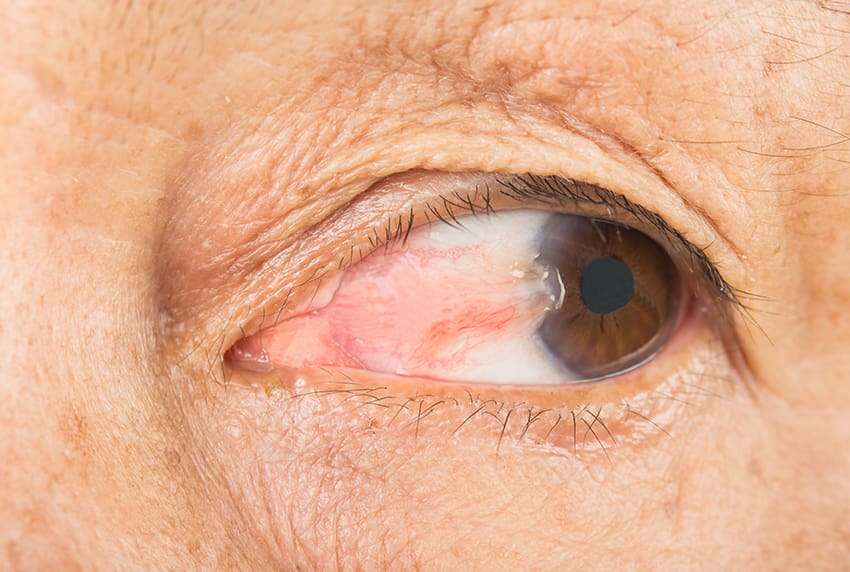Pterygia occur when the conjunctiva, a layer that covers the while of the eye, becomes damaged by years of exposure to ultraviolet light. A pink triangle of tissue can develop due to an abnormal healing response.
FAQ
What are the symptoms of a pterygium?
Initially, there may be no symptoms. However, as a pterygium becomes more developed, it disturbs the smooth surface of the eye and causes grittiness and irritation. Pterygia can become sore and red when inflamed.
If a pterygium grows onto the cornea, vision can be disturbed if it causes scarring or alters the shape. In extreme cases, a pterygium can grow directly into the line of sight.
How do you treat a pterygium?
Early irritation can be treated with artificial tears to lubricate the eye or anti-inflammatory drops, if needed.
Surgery to remove the pterygium is recommended if the discomfort affects quality of life, patients are concerned by the appearance or vision is being affected.
What does surgery involve?
The procedure is performed with local anaesthetic drops and takes around 30 minutes. After removal of the pterygium, a small amount of tissue is taken from the conjunctiva under the eyelid to repair the treated area and aid quicker healing.
What is the recovery after surgery?
The eye will be uncomfortable for a few days and can appear reddened while healing.


